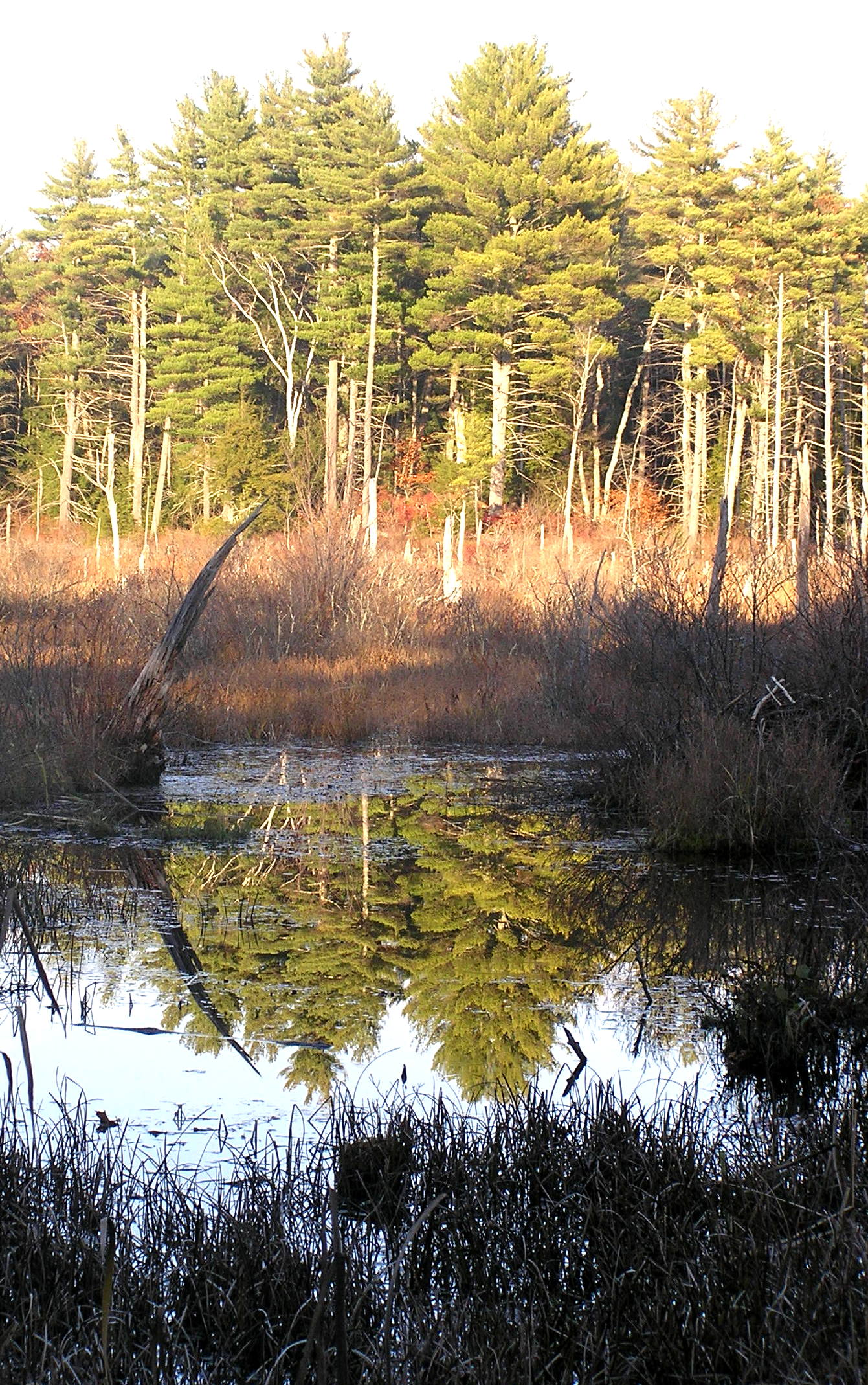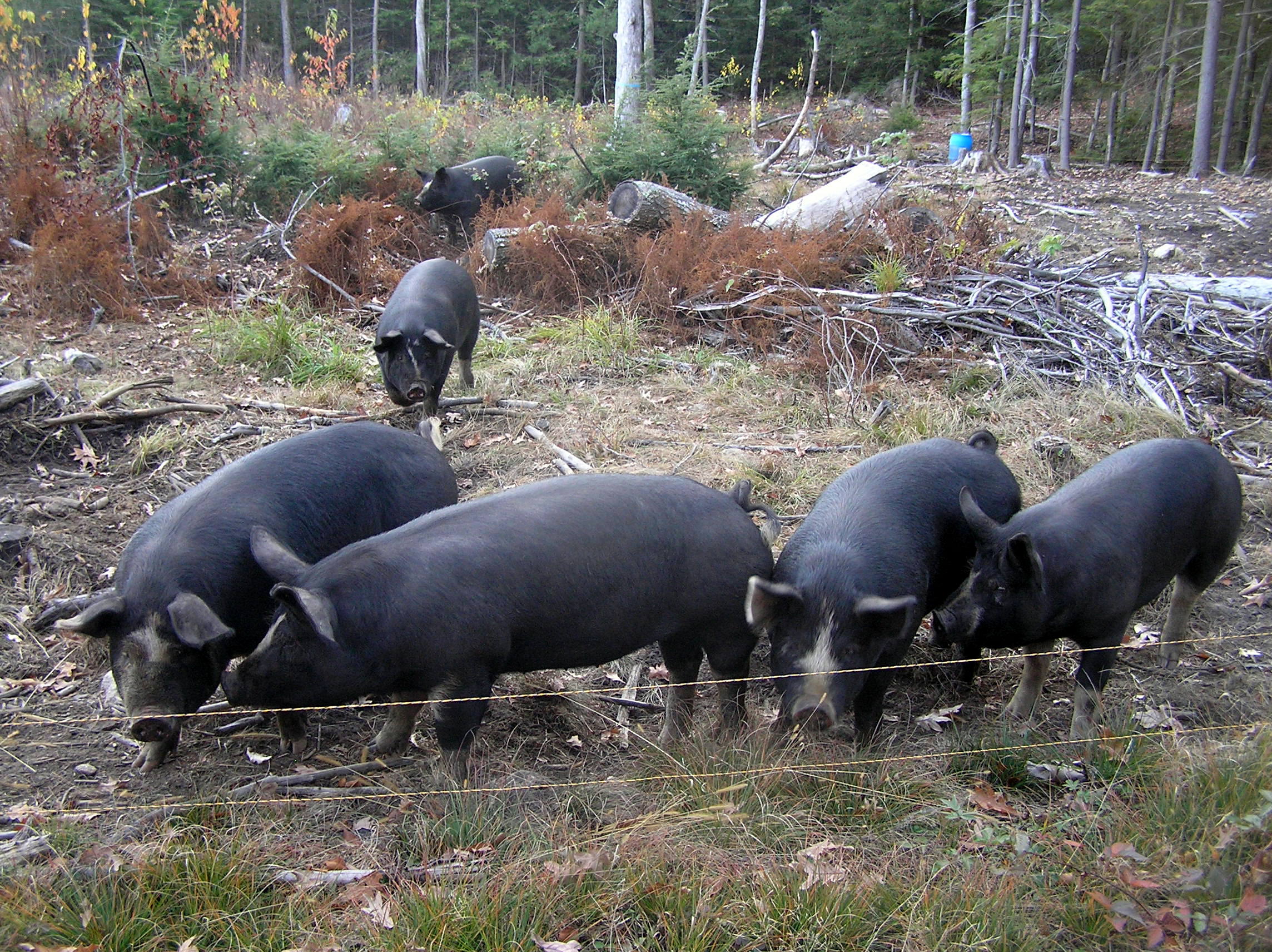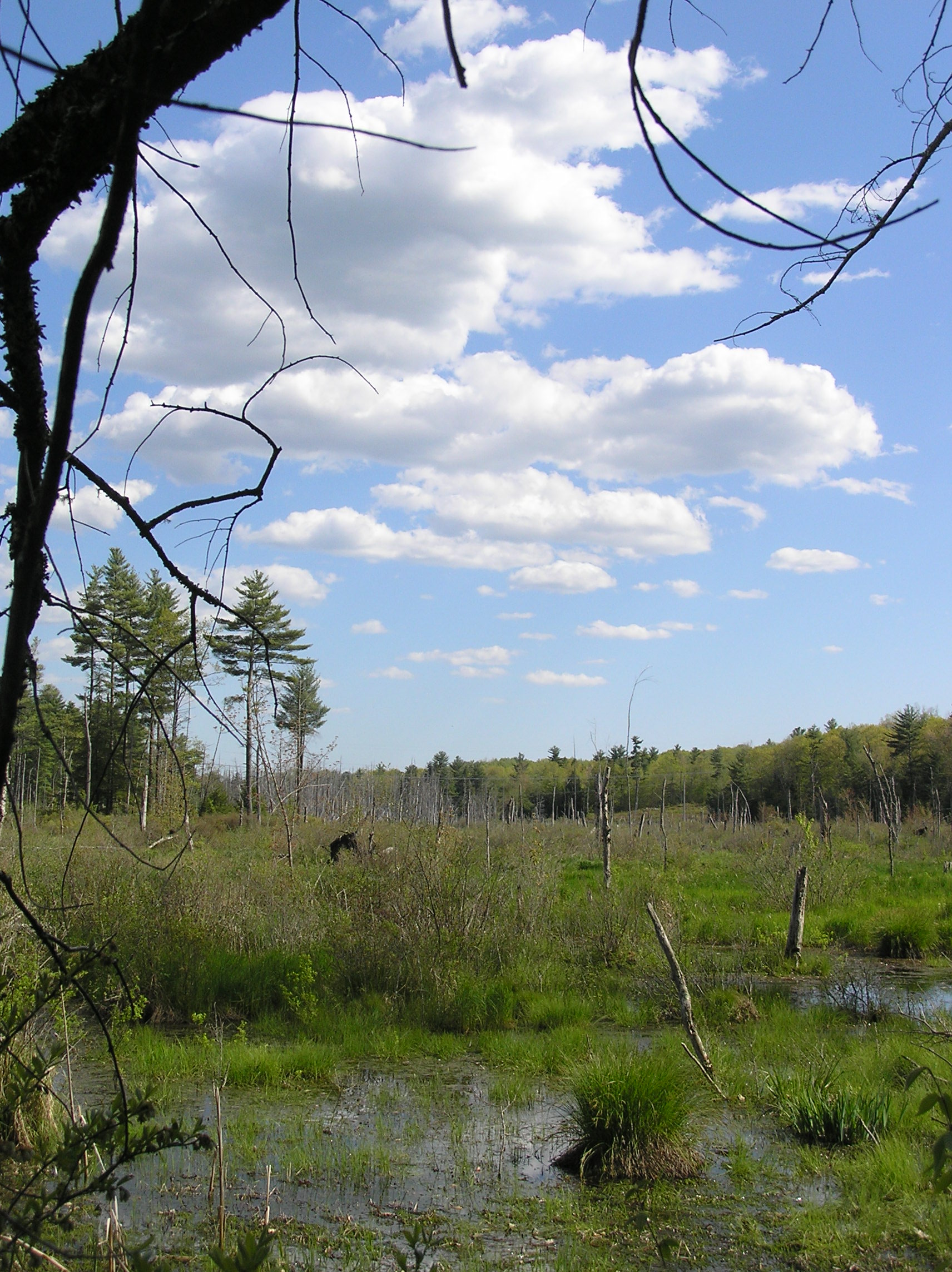Brasen Hill Conservation Area: Public Trails
(AKA Warren Farm)
Protection: Conservation Easement
Description: Town-owned property with pond and extensive ledges.
Trail Length: From 1/2 to ~4 Miles
Difficulty: Easy to Moderate
Location: Warren Rd (off of Rte 4)
Activities: Hiking, snowshoeing; hunting with landowner permission
Parking: Go left in front of the house, and follow the road to the parking area behind the barn. Do not block any of the farm vehicles that are there.
Acreage: 244
Brasen Hill – Warren Farm Trails
“People say that losing weight is no walk in the park. When I
hear that I think, yeah, that’s the problem.” ~Chris Adams
The 244-acre Brasen Hill (formerly Warren) Farm was protected via a conservation easement in 1989, with funding from the town of Barrington, the state’s LCIP program (a precursor to today’s LCHIP), and a generous donation from the owners. The property is open to the public for pedestrian access on the main woods roads. Hunting is allowed with landowner permission. Motorized vehicles are not generally permitted. The variety of habitats on the Brasen Hill Farm (fields, ponds, brush, forest) make it especially good for birdwatching.
It is a working farm, so please stay out of the way of any agricultural activities, don’t bother the animals. Consider buying local eggs, meat, and fruits and veggies from them, via their web site: https://www.brasenhillfarm.com. Supporting local agriculture helps ensure that these beautiful places will remain so.
You may see structures (hoop houses, barn) on this protected land; they are permitted as long as they are in support of agriculture. There are often livestock – pigs, sheep, goats, etc. – penned in or along the fields. Admire them, but don’t harass them, and be careful: they may be behind electric fences.
In recent years there have been several logging operations on the property, largely to create the brushy and young forest conditions (known as “early successional habitat”) that were once common in New England but are increasingly rare. New England Cottontail rabbits, ground-nesting birds such as bobolinks and woodcocks, and other species are dependent on this sort of habitat for their survival. The Natural Resources Conservation Service (part of the USDA) helped provide funding for this habitat enhancement.
A consequence of the logging is that the trails shown on the map may not be in the best shape (though they’re recovering). It also means that there are several logging skidder roads in addition to what is shown, and it’s easy to get confused. Exercise caution so you don’t get lost! A GPS or similar smart phone app is recommended. The woods roads are pretty easy to follow. The Barrington Trails Committee plans to put up signage in the future.
If you stop by the Brasen Hill Farm at dusk in late April/early May, you may witness the amazing courtship dance of the male woodcock:
“To court females, the male flies upward in tight, spiraling circles creating a twittering sound with its outer primary wing feathers. At the height of its flight, the male flies steeply downward, landing close to its original position. After each flight the male emits a series of nasal ‘peents.’ Males repeat this performance 10 to 20 times during an evening” (from NH Fish and Game).
A feature of the property that will be of particular interest to history buffs is the ‘tailings hill,’ an artificial hill next to a swamp: it looks natural but is in fact man-made. It was made by the earliest European settlers in Barrington who dredged material out of the swamp to be smelted for bog iron in the early 1700s. As you stand on the hill it is incredible to consider that all of the earth you are standing on was hauled there by horses, oxen, and manpower.
On another historical note, the McDaniel Garrison, a fort that protected the early settlers of Barrington during skirmishes with Native Americans, was also located on the property. It is long gone, and its exact location isn’t clear.


